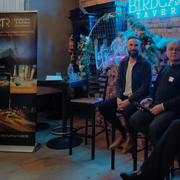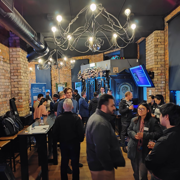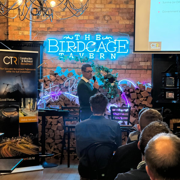In our ever-changing market, there are different thoughts, trends, and challenges all areas of the building services industry are facing. To help navigate these, CIBSE's New Zealand chapter recently held a social event at Auckland's Birdcage Tavern where a panel discussion focused on how we as a collective can future-proof the building services industry in New Zealand.
The panel consisted of a cross-section of industry expertise from Consulting Engineering, Main Contractor/BIM, and Client-Side representatives who delved into the skills and experience required beyond 2024 that building services professionals will need, how the different sections of the industry can work together for the better of the industry, staff retention, and strategies to retain talent in New Zealand. Chris Story from Construction & Technical Recruitment (CTR) also provided an informative overview of the current building services employment market and what the next 6–12 months may bring.
Three of the key concerns discussed included the downturn in the NZ market in the recent years and the loss of talent to overseas. The point was raised that this may also be due to the world opening from the COVID-19 Pandemic as well the "OE effect" (overseas experience—a very Kiwi thing!). As the market starts to recover, it was agreed that more focus should be placed on retaining talent in NZ and attracting more from overseas as well.
The NZ education system also came under scrutiny, especially tertiary engineering degrees that haven't done the best job at informing students about the industry let alone preparing students for the building services industry. Increased communication and better building services knowledge is thought to better attract and prepare graduates coming into building services, as well as help the industry grow.
More frequent and better-quality collaboration between project stakeholders in the industry - consultants, contractors, BIM managers, clients etc was sited as a third key to future-proofing the NZ building services industry as a way to help the construction process become smoother and more efficient. An example cited was an instance where a BIM draughters may create a model to a deep level of detail (e.g. LOD 400), and the builders on site may not follow it to that degree. As a result, time and effort is wasted and ultimately the money invested in in-depth modelling.
The event was also a great opportunity for like-minded individuals to network with each other and a special thanks goes out to the Seber Recruitment Group for supporting CIBSE ANZ’s annual program of technical seminars and Young Engineers Networking events. We also extend our gratitude to Gary Davenport (University of Auckland), Ryan Thompson (22 Degrees), and Julie Jenner (Kinetic Build) for being amazing panel speakers!



